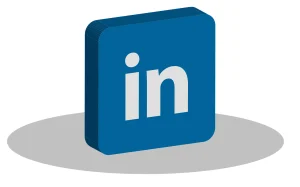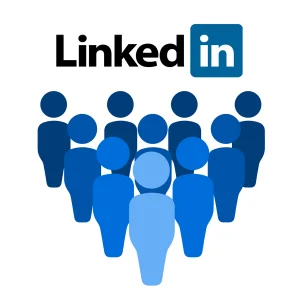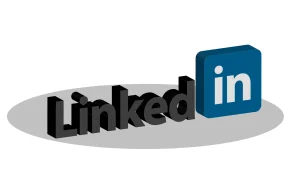LinkedIn Marketing is a powerful social networking platform
LinkedIn is a powerful social networking platform designed specifically for professionals and businesses. Since its launch in 2003, it has grown to become the world’s largest professional network, with hundreds of millions of users globally. LinkedIn provides a space for professionals across various industries to connect, share ideas, find jobs, recruit talent, and build their personal brands. Below is an 800-word detailed overview of LinkedIn.

History and Development
LinkedIn was founded in December 2002 by Reid Hoffman and a team of seasoned professionals from PayPal and Socialnet.com. The platform officially launched in May 2003, and by the end of the first month, it had around 4,500 members. LinkedIn was built with the vision of creating a space for professionals to maintain their networks online, a stark contrast to other social media platforms like Facebook or MySpace, which were focused more on personal and social connections.
Over the years, LinkedIn has seen several key developments:
- 2005: LinkedIn introduced the “Jobs” feature, allowing companies to post job openings and job seekers to find opportunities.
- 2007: The platform launched the “LinkedIn Answers” feature, a Q&A section that allowed professionals to exchange knowledge. This was later replaced by the “Groups” feature, where users could join industry-specific communities.
- 2011: LinkedIn went public, further expanding its influence and capabilities.
- 2016: Microsoft acquired LinkedIn for approximately $26.2 billion, leading to further integration with Microsoft’s suite of products.
Core Features
LinkedIn’s core features are designed to cater to professionals looking to expand their network, find opportunities, and engage with content relevant to their industry. Some of these features include:
- Profiles: Each user has a personal profile, which serves as an online resume. It includes sections like a summary, work experience, education, skills, endorsements, and recommendations. A well-optimized profile can significantly increase a user’s visibility to potential employers, recruiters, or clients.
- Connections: LinkedIn operates on a network of connections. Users can connect with colleagues, peers, industry leaders, and more. The platform also introduces the concept of second and third-degree connections, which can help users expand their network beyond immediate contacts.
- Jobs: The Jobs feature allows users to search and apply for jobs posted by companies worldwide. The platform also offers tools like job alerts, salary insights, and company reviews, making it easier for users to find suitable job opportunities.
- LinkedIn Learning: LinkedIn Learning is an online educational platform that offers a vast library of video courses taught by industry experts. Users can learn new skills, enhance existing ones, and earn certificates that can be added to their profiles.
- Content Sharing and Publishing: LinkedIn encourages users to share content relevant to their industry. This can include articles, blog posts, videos, and updates. Additionally, LinkedIn Pulse allows users to publish long-form articles directly on the platform, establishing themselves as thought leaders in their field.
- Groups: LinkedIn Groups provide a space for professionals within the same industry or with similar interests to connect, share ideas, and collaborate. These groups can be focused on anything from specific industries to general professional development topics.
- Recruiter and Talent Solutions: LinkedIn offers powerful tools for recruiters and companies looking to hire talent. LinkedIn Recruiter, for instance, allows hiring managers to search for candidates based on specific criteria, making it easier to find the right fit for open positions.
- Sales Navigator: This is a premium tool designed for sales professionals to find and connect with potential clients. Sales Navigator offers advanced search filters, lead recommendations, and the ability to track sales activities.
LinkedIn’s Impact on Professional Networking
LinkedIn has revolutionized the way professionals connect and interact. Unlike traditional networking methods, which often rely on in-person events or direct referrals, LinkedIn allows users to build and maintain relationships online. This has made networking more accessible and efficient, particularly for individuals in remote locations or those working in niche industries.
Moreover, LinkedIn has leveled the playing field for job seekers. With features like LinkedIn Learning, users can acquire new skills and showcase them to potential employers, regardless of their location or background. The platform’s job search tools also allow users to discover opportunities that may not be advertised elsewhere, increasing their chances of finding the right job.

Personal Branding and Thought Leadership
LinkedIn is also a critical tool for personal branding. Professionals can use the platform to showcase their expertise, share insights, and engage with others in their field. By consistently sharing high-quality content and participating in discussions, users can build a strong personal brand that can lead to new opportunities, whether that’s a job offer, speaking engagement, or collaboration.
Thought leadership is another important aspect of LinkedIn. By publishing articles and sharing insights, users can establish themselves as experts in their field. This not only boosts their credibility but also helps them stand out in a crowded job market.
Challenges and Criticisms
Despite its many benefits, LinkedIn is not without its challenges. One common criticism is that the platform can become overly self-promotional, with users sometimes sharing content that is more about boosting their image than providing value to others. Additionally, the platform’s messaging system is often used for spam, with users receiving unsolicited messages from recruiters or salespeople.
Another challenge is that LinkedIn’s algorithms tend to favor users who are already well-connected, making it harder for newcomers to gain visibility. However, with consistent effort and engagement, it’s possible for anyone to build a strong presence on the platform.
Conclusion
LinkedIn has grown to become an essential tool for professionals worldwide. Its unique blend of networking, job searching, learning, and content sharing makes it a one-stop shop for career development. Whether you’re a job seeker, recruiter, or simply looking to expand your professional network, LinkedIn offers a wealth of resources to help you achieve your goals. As the platform continues to evolve, it will likely remain a central hub for professional connections and career growth for years to come.

